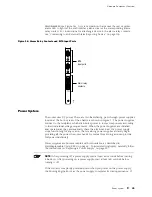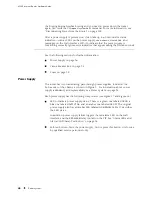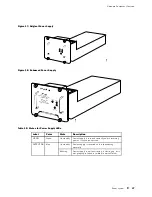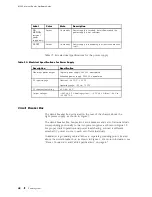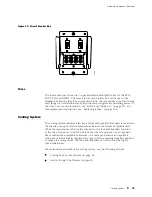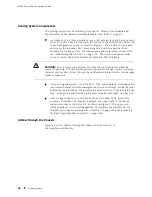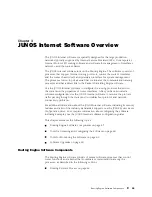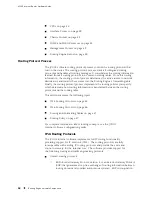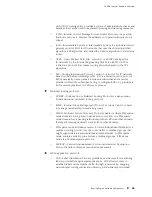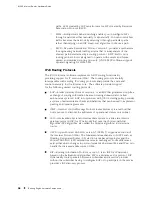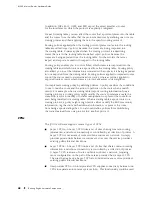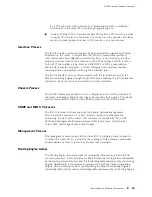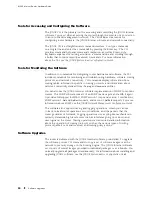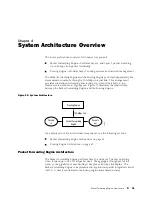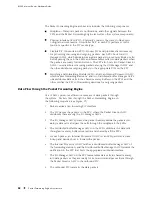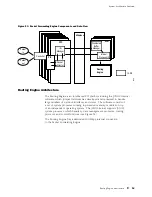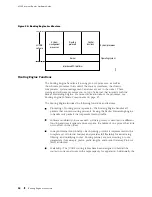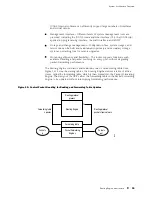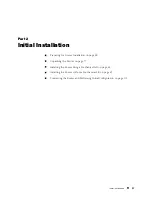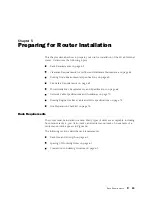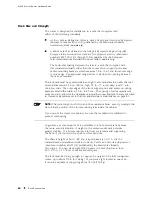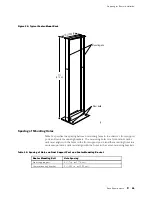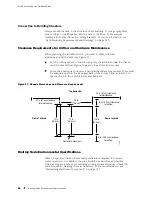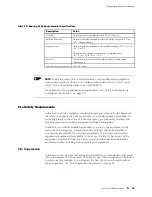
JUNOS Internet Software Overview
by a VPN customer with connections to several various ISPs, or different
connections to the same ISP in various geographic regions.
Carrier-of-Carrier VPNs—Carrier-of-carrier VPNs allow a VPN service provider
to supply VPN service to a customer who is also a service provider. The latter
service provider supplies Internet or VPN service to an end customer.
Interface Process
The JUNOS interface process manages the physical interface devices and logical
interfaces on the router. It implements the JUNOS command-line interface
(CLI) commands and configuration statements that you use to specify interface
properties such as location (FPC location in the FPC card cage and PIC location
on an FPC), the interface type (such as SONET/SDH or ATM), encapsulation,
and interface-specific properties. You can configure both interfaces that are
currently active and interfaces that might be installed later.
The JUNOS interface process communicates with the interface process in the
Packet Forwarding Engine through the JUNOS kernel, enabling the JUNOS Internet
software to track the status and condition of router interfaces.
Chassis Process
The JUNOS chassis process allows you to configure and control the properties of
the router, including conditions that trigger alarms and clock sources. The chassis
process communicates directly with a chassis process in the JUNOS kernel.
SNMP and MIB II Processes
The JUNOS Internet software supports the Simple Network Management
Protocol (SNMP), versions 1, 2, and 3, which provides a mechanism for
monitoring the state of the router. This software is controlled by the JUNOS
SNMP and Management Information Base (MIB) II processes, which consist
of an SNMP master agent and a MIB II agent.
Management Process
The management process starts all the other JUNOS software processes and the
CLI when the router boots. It monitors the running JUNOS processes and makes
all reasonable attempts to restart any process that terminates.
Routing Engine Kernel
The Routing Engine kernel provides the underlying infrastructure for all JUNOS
software processes. It also provides the link between the routing tables maintained
by the routing protocol process and the forwarding table maintained by the Routing
Engine. Additionally, it coordinates communication with the Packet Forwarding
Engine, which primarily involves synchronizing the Packet Forwarding Engine’s
forwarding table with the master forwarding table maintained by the Routing Engine.
Routing Engine Software Components
49
Summary of Contents for Internet Router M160
Page 12: ...M160 Internet Router Hardware Guide xii Table of Contents ...
Page 16: ...M160 Internet Router Hardware Guide xvi List of Figures ...
Page 18: ...M160 Internet Router Hardware Guide xviii List of Tables ...
Page 24: ...M160 Internet Router Hardware Guide xxiv Requesting Support ...
Page 26: ...2 Product Overview ...
Page 30: ...M160 Internet Router Hardware Guide 6 Safety Requirements Warnings and Guidelines ...
Page 66: ...M160 Internet Router Hardware Guide 42 Cable Management System ...
Page 80: ...M160 Internet Router Hardware Guide 56 Routing Engine Architecture ...
Page 82: ...58 Initial Installation ...
Page 104: ...M160 Internet Router Hardware Guide 80 Unpacking the Router ...
Page 148: ...M160 Internet Router Hardware Guide 124 Configuring the JUNOS Internet Software ...
Page 150: ...126 Hardware Maintenance Replacement and Troubleshooting Procedures ...
Page 242: ...M160 Internet Router Hardware Guide 218 Troubleshooting the Power System ...
Page 244: ...220 Appendixes ...
Page 292: ...M160 Internet Router Hardware Guide 268 Packing Components for Shipment ...
Page 301: ...Part 5 Index Index 277 ...
Page 302: ...278 Index ...

